The cement wall and gate surrounding Rincon de Puembo hid the treasures of what lay beyond. Once inside, we found beautiful grounds, a swimming pool, several courtyards, gorgeous local flora and many small buildings that made up the hotel grounds.
Our accommodations were similar to a condo. We had two floors and a balcony. Bill and I slept downstairs and had our own bathroom while the boys slept upstairs and had their own bathroom.
Before we met our driver, we had breakfast in the hotel restaurant.
Here we stand with Cayambe, the third largest mountain in Ecuador, in the background.
We stopped at a roadside stand to purchase and try the cherimoya fruit. It was dark green outside and contained sweet soft flesh and black seeds inside.
Sights spotted from our car included the school bus that chauffeured employees around the city and roadside vendors.
On our way to Otavalo, we stopped in Miralago to sample the treats. The boys tried queso de hoja (cheese wrapped in a leaf), bizcocho (buttery, light biscuits), and candied peanuts. There was a group of musicians playing local music and a boy tending alpacas outside. The view here was of San Pedro del Lago in the Imbabura Province. Mason first discovered the mythical Diablo Huma here. Diablo Huma is a Spanish-Quichua blend that means Devil Head. The appearance of the Diablo Huma is common at many festivals in the Andes of Ecuador.
Shortly later, we arrived in Otavalo to experience the largest open air market at Plaza de los Ponchos. There were so many sights, colors and smells. People sold textiles, jewelry, musical instruments, hand-painted platters, purses, clothing, spices and raw foods. Food stands offered tripe soups, whole fried fish, and suckling pig. We enjoyed walking up and down the aisles in search of souvenirs and participated in the bargaining that accompanied the shopping experience.
We ate lunch at El Lenador in Cotocachi, Ecuador. This town is known for its leather and is a place where many North American retirees reside. Several of us ordered the midday meal, called almuerzo, which included juice, soup, an entree and a dessert.
After lunch, we wandered from the restaurant down Calle 10 de Agosto to the downtown square, stopping in a grocery store and many of the small shops offering leather wares. Then we had coffee at Café Rio Intag and I pulled out my sock for a little knitting.
From there, we traveled to Peguche, a small town known for its weaving, both traditional and modern. We stopped for a weaving shop and then for a musical demonstration at Taller de Instrumentos Andimos-Nanda Manachi. The owner played all of the instruments she made in her shop and the music was beautiful.
It started to rain as we made our way into the forest. We hiked on an easy path for a short period of time and were rewarded with a beautiful view of Peguche Waterfall. On our way back to the car, we came across a giant solar calendar.
Our driver dropped us off at Dona Esther, our lodging for the night, back in Otavalo. The room keys were skeleton keys, the hot water had to be turned on with a separate gauge and the soap was for body and hands. After checking into our two rooms, we decided to try to go to mass. We were told there was a 6 pm mass at the church nearby.
El Santuario del Senor de las Angustias sat on the square in Parque Simon Bolivar. There were a lot of people outside the church and quite a few inside. We had quite an unusual experience which involved attending a Baptism rather than a Mass and ended with the priest giving us Holy Communion and sending us on our way.
We wandered through the town to a recommended restaurant called Sisa. For dinner, we had many local specialties: Locro de papas (a creamy potato soup served with chunks of cheese and avocado), sopa de legumbres (vegetable soup), encocado mixto de camarones y corvina con arroz y patacones (shrimp and sea bass in a coconut sauce with rice and fried plantain pieces).
Tomorrow we head to the cloud forest!
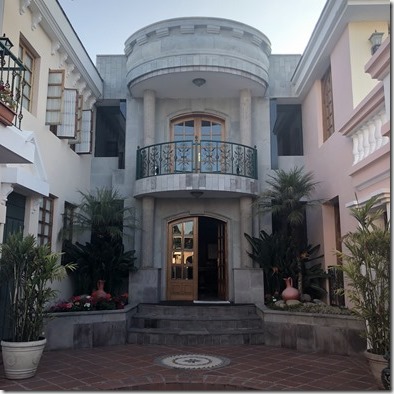
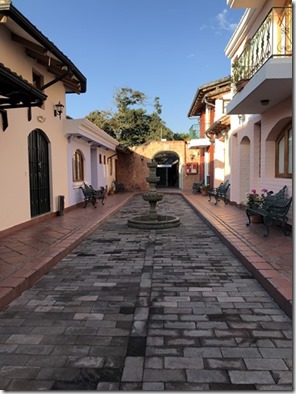
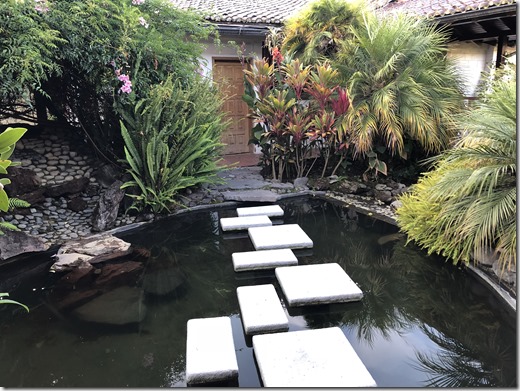
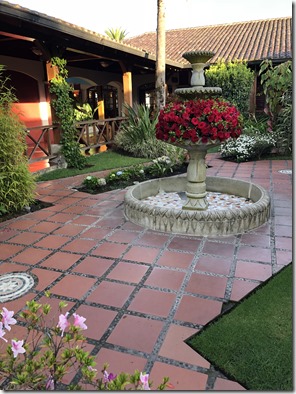
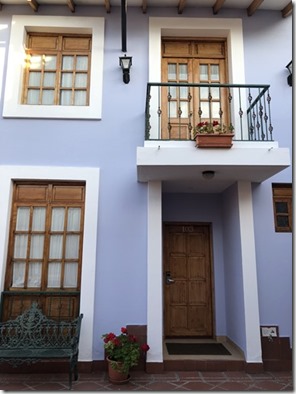
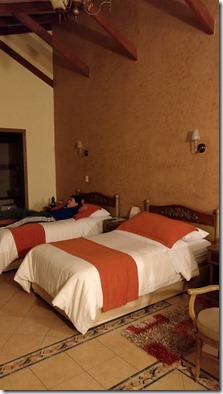
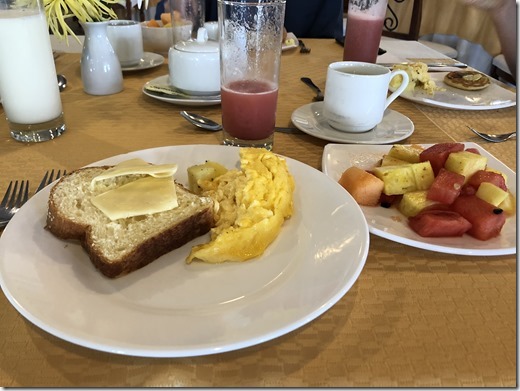
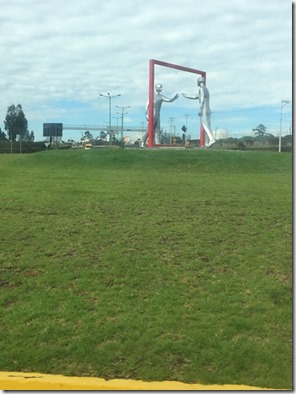
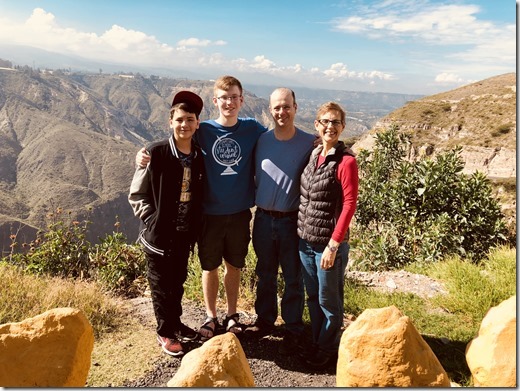
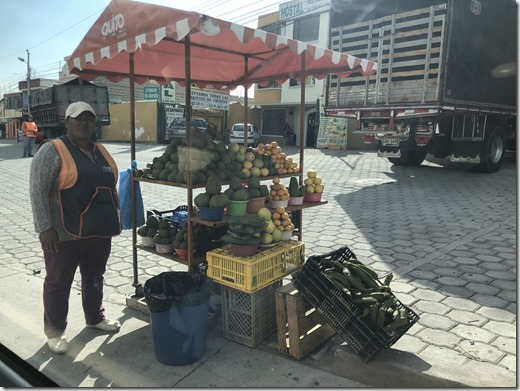
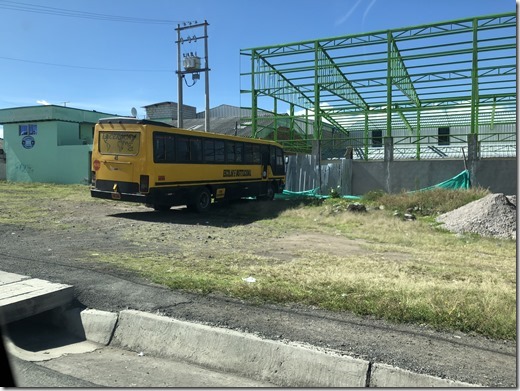
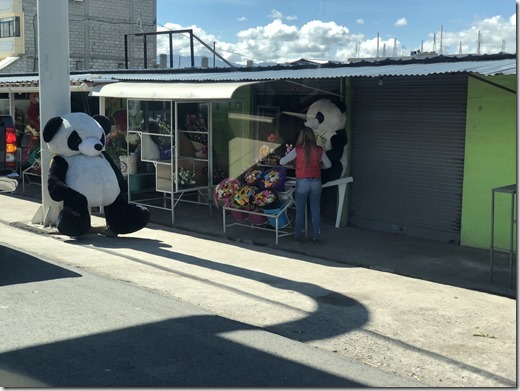
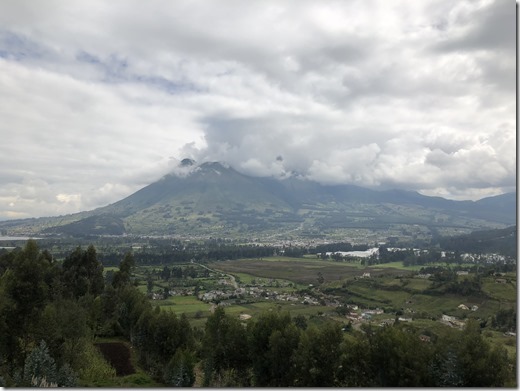
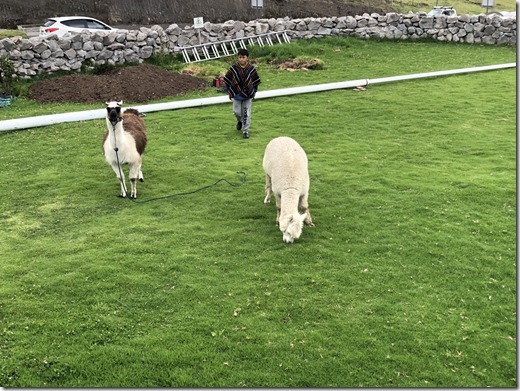
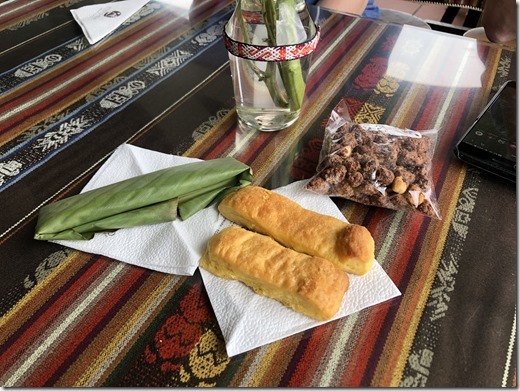
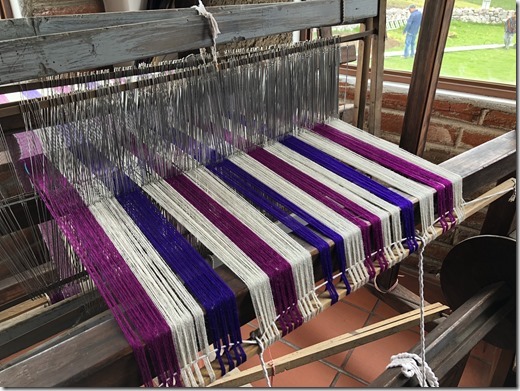
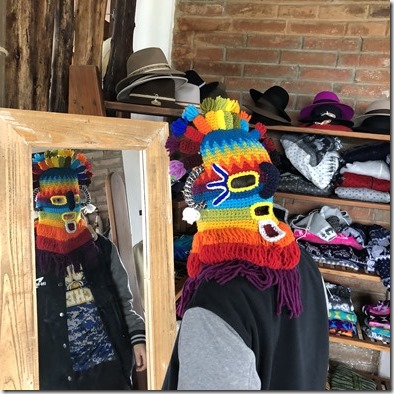
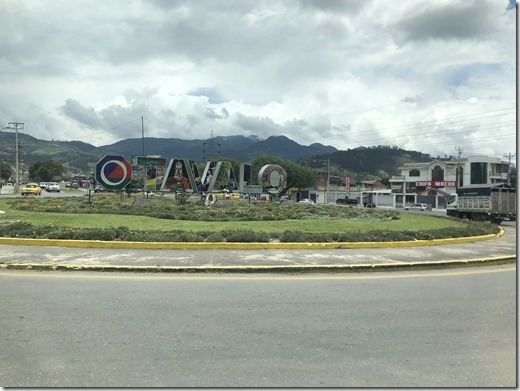
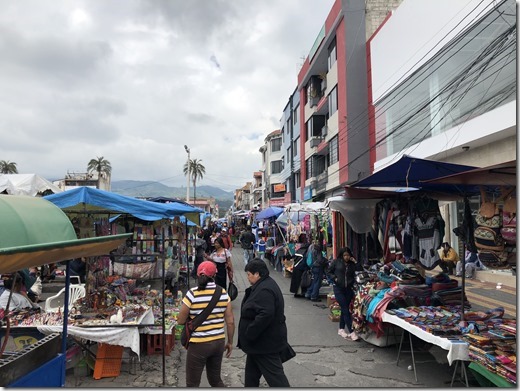
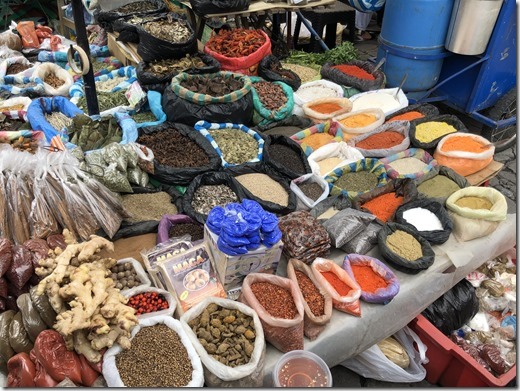
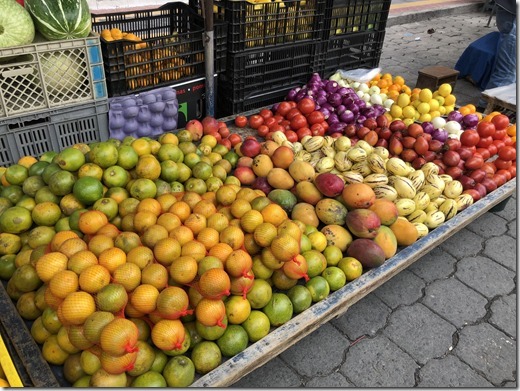
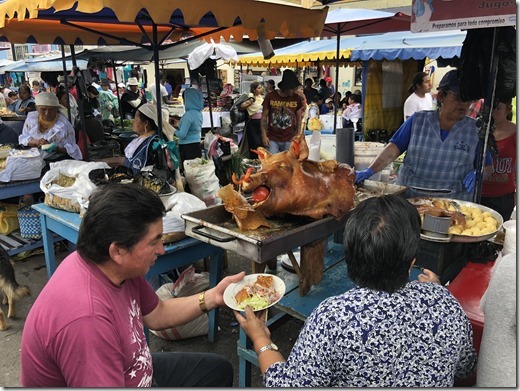
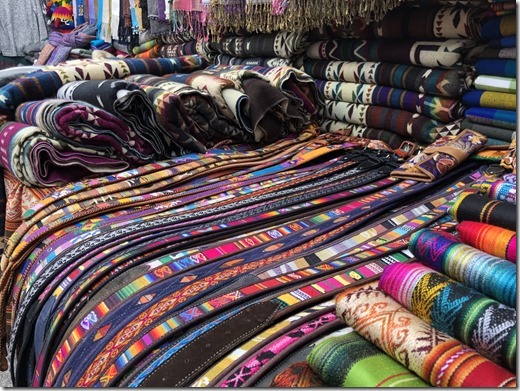
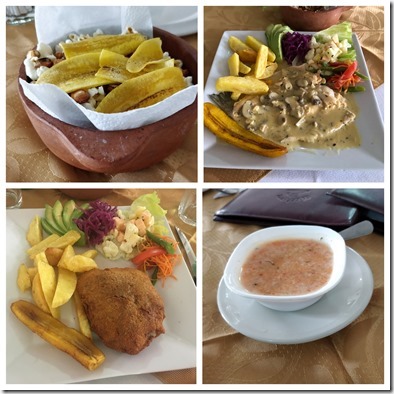
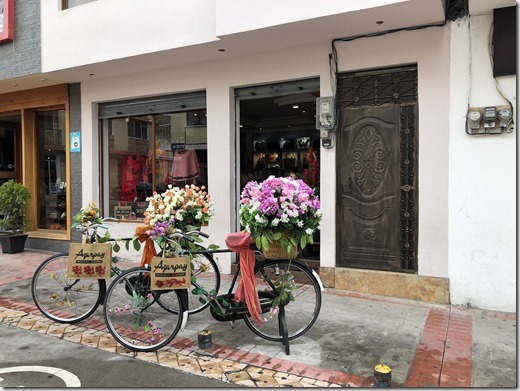
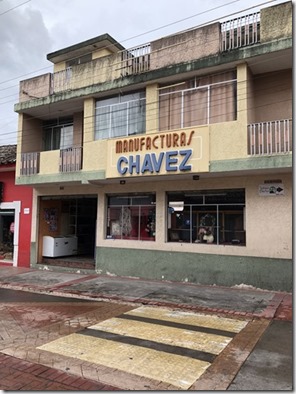
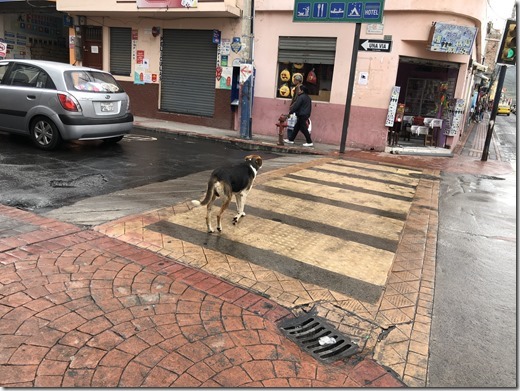
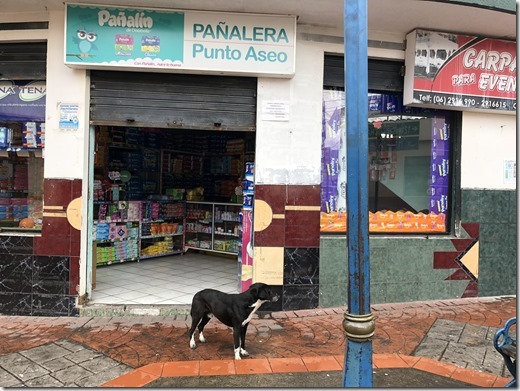
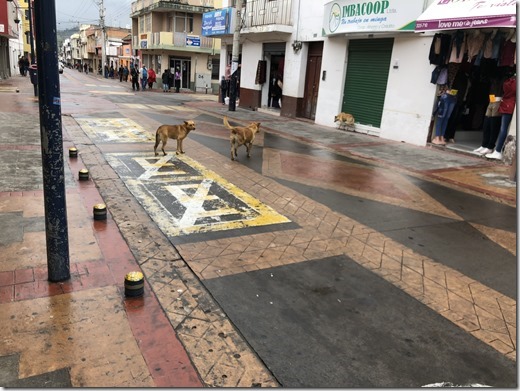
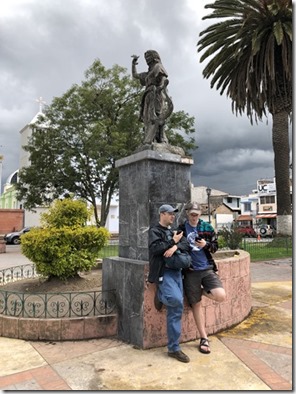
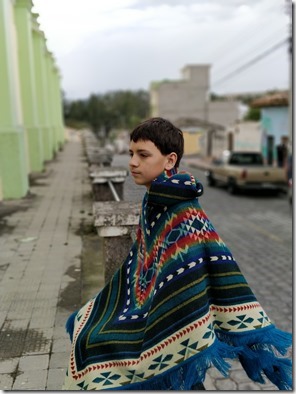
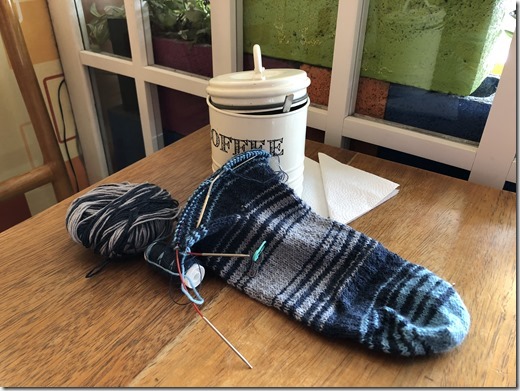
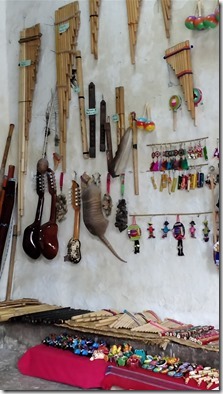
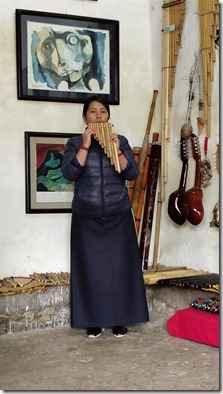
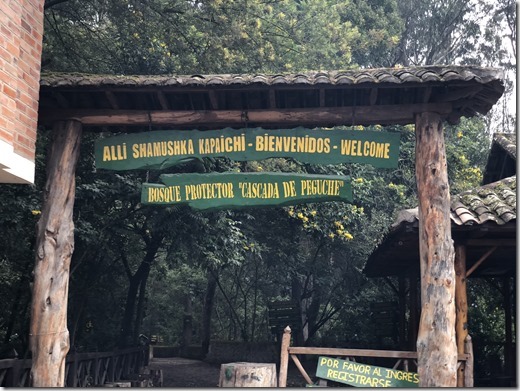
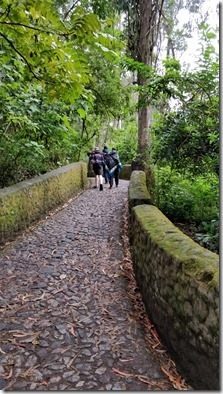
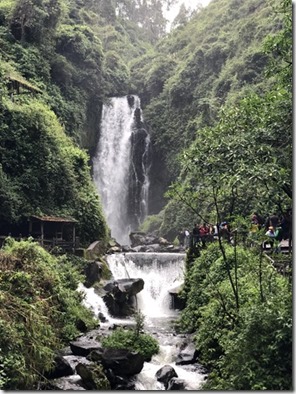
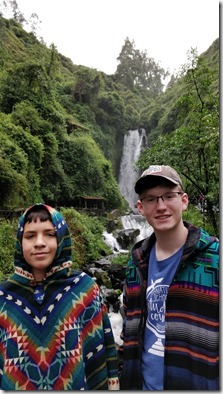
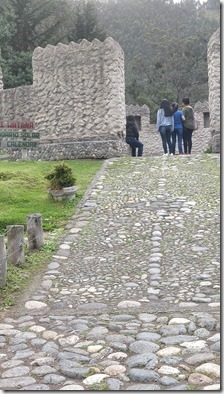
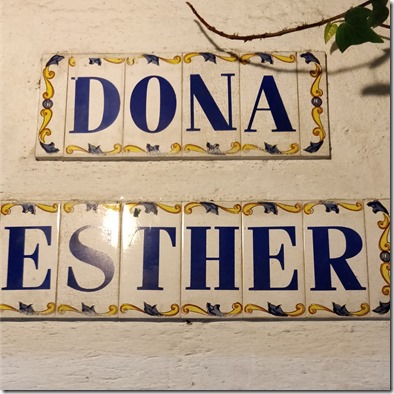
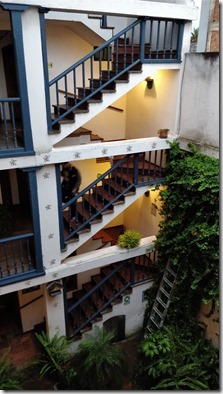
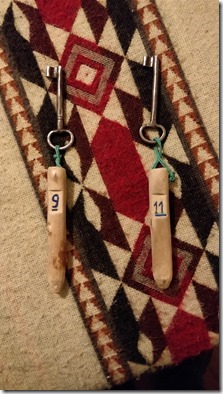
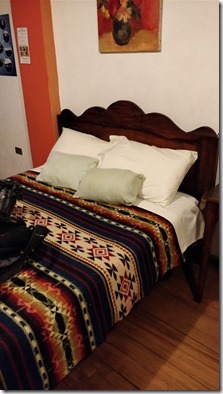
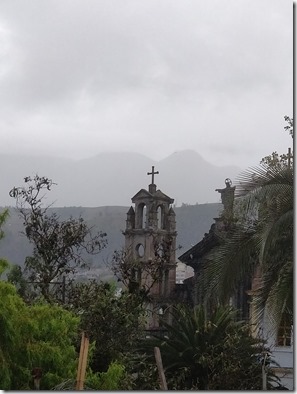
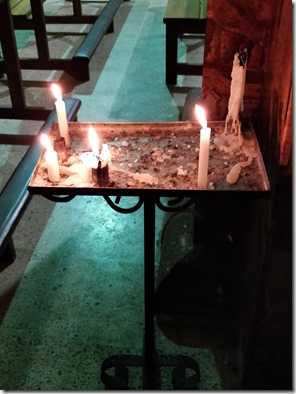
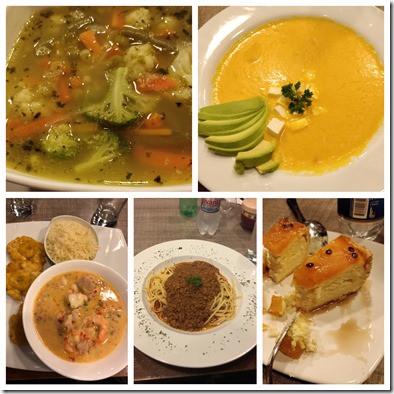
No Comments